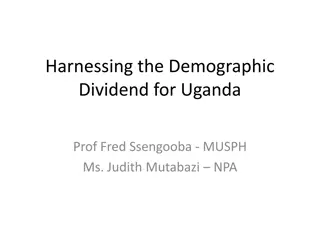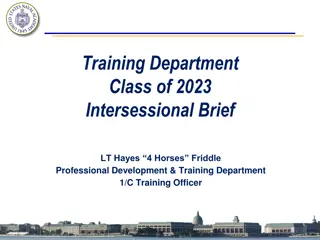
Understanding RANSAC: A Robust Parameter Estimation Technique
Discover what RANSAC (RANdom SAmple Consensus) is and how it can effectively estimate parameters of a mathematical model despite outliers in the data. Learn through illustrations the iterative process of selecting random samples, calculating model parameters, and identifying inliers to build a reliable model.
Download Presentation

Please find below an Image/Link to download the presentation.
The content on the website is provided AS IS for your information and personal use only. It may not be sold, licensed, or shared on other websites without obtaining consent from the author. If you encounter any issues during the download, it is possible that the publisher has removed the file from their server.
You are allowed to download the files provided on this website for personal or commercial use, subject to the condition that they are used lawfully. All files are the property of their respective owners.
The content on the website is provided AS IS for your information and personal use only. It may not be sold, licensed, or shared on other websites without obtaining consent from the author.
E N D
Presentation Transcript
A Brief Introduction of RANSAC Reporter: 1
Whats RANSAC ? RANSAC is an abbreviation for "RANdom SAmple Consensus". It is an iterative method to estimate parameters of a mathematical model from a set of observed data which contains outliers. Non-deterministic algorithm. 2 http://en.wikipedia.org/wiki/RANSAC
Why RANSAC ? RANSAC can estimate a model which ignored outliers. Example: To fit a line Least Squares method: Optimally fitted to all points including outliers. RANSAC: Only computed from the inliers. 3 http://en.wikipedia.org/wiki/RANSAC
Illustration of RANSAC 4 cmp.felk.cvut.cz/~matas/papers/presentations/viva.ppt
Illustration of RANSAC Select sample of m points at random 5 cmp.felk.cvut.cz/~matas/papers/presentations/viva.ppt
Illustration of RANSAC Select sample of m points at random Calculate model parameters that fit the data in the sample 6 cmp.felk.cvut.cz/~matas/papers/presentations/viva.ppt
Illustration of RANSAC 7 cmp.felk.cvut.cz/~matas/papers/presentations/viva.ppt
Illustration of RANSAC Select sample of m points at random Calculate model parameters that fit the data in the sample Calculate error function for each data point Select data that support current hypothesis 8 cmp.felk.cvut.cz/~matas/papers/presentations/viva.ppt
Illustration of RANSAC Select sample of m points at random Calculate model parameters that fit the data in the sample Calculate error function for each data point Select data that support current hypothesis Repeat sampling 9 cmp.felk.cvut.cz/~matas/papers/presentations/viva.ppt
Illustration of RANSAC Select sample of m points at random Calculate model parameters that fit the data in the sample Calculate error function for each data point Select data that support current hypothesis Repeat sampling 10 cmp.felk.cvut.cz/~matas/papers/presentations/viva.ppt
Illustration of RANSAC ALL-INLIER SAMPLE RANSAC time complexity k number of samples drawn N number of data points tM time to compute a single model mS average number of models per sample 11 cmp.felk.cvut.cz/~matas/papers/presentations/viva.ppt
RANSAC Algorithm Input: data: a set of observations model: a model that can be fitted to data n: the minimum number of data required to fit the model k: the maximum number of iterations allowed in the algorithm t: a threshold value for determining when a datum fits a model d: the number of close data values required to assert that a model fits well to data Output: best_model : model parameters which best fit the data (or nil if no good model is found) best_consensus_set : data point from which this model has been estimated best_error : the error of this model relative to the data http://en.wikipedia.org/wiki/RANSAC 12
RANSAC Algorithm 13 http://en.wikipedia.org/wiki/RANSAC
Parameters ( 1 ( 1 ) k: Iteration times. n: Selected points in one iteration. p: Probability in k iteration selects only inliers. w: Probability of a point which is a inlier. k = n 1 p w ) n log 1 p = k log( ) w In general, the p is unknown. If we fixed p, the k increased when n increased. 14 http://en.wikipedia.org/wiki/RANSAC
Discussion How to choose the model in input parameter? Linear equation, planar equation, or homography. 15






















